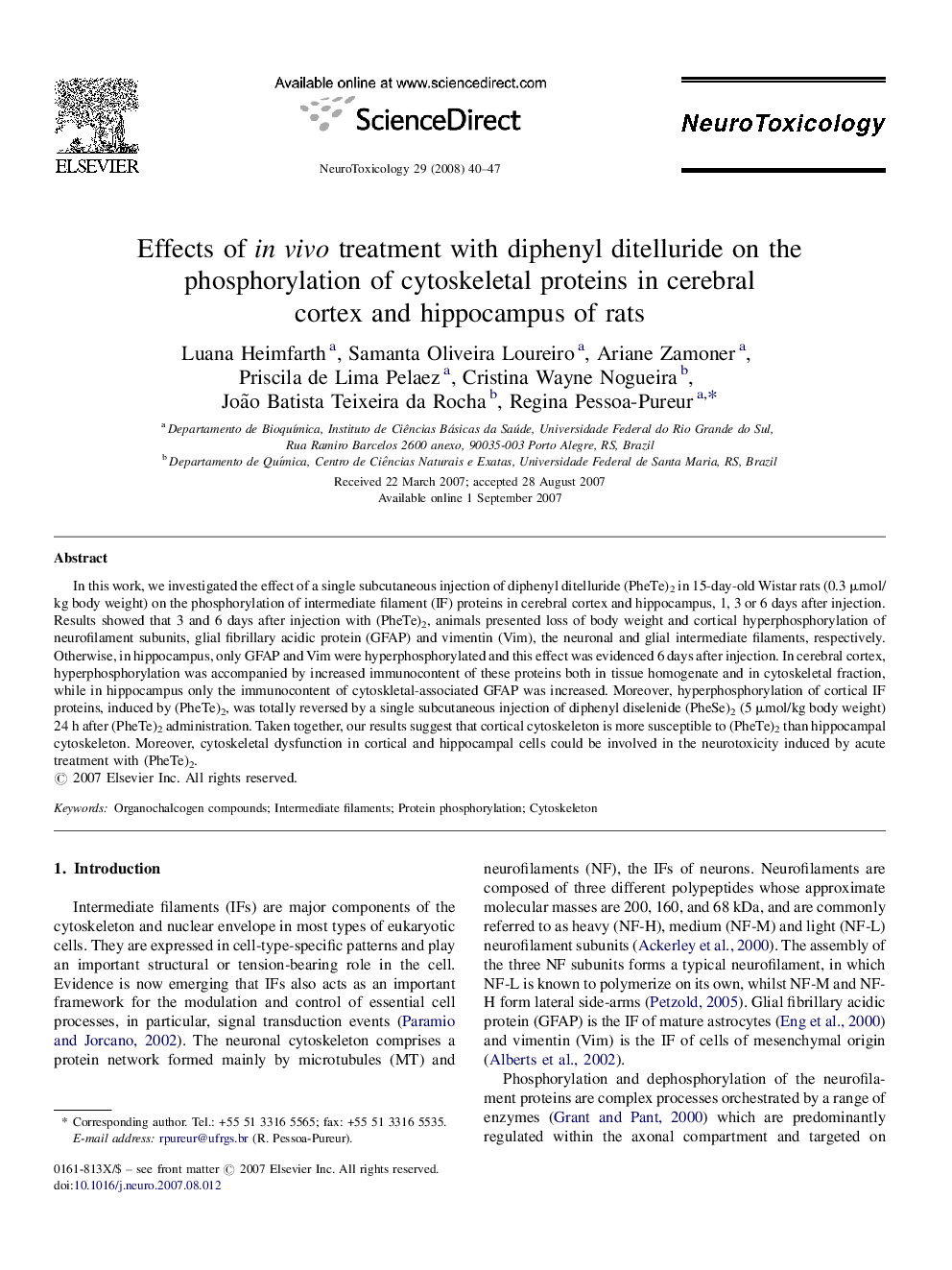| Article ID | Journal | Published Year | Pages | File Type |
|---|---|---|---|---|
| 2590443 | NeuroToxicology | 2008 | 8 Pages |
In this work, we investigated the effect of a single subcutaneous injection of diphenyl ditelluride (PheTe)2 in 15-day-old Wistar rats (0.3 μmol/kg body weight) on the phosphorylation of intermediate filament (IF) proteins in cerebral cortex and hippocampus, 1, 3 or 6 days after injection. Results showed that 3 and 6 days after injection with (PheTe)2, animals presented loss of body weight and cortical hyperphosphorylation of neurofilament subunits, glial fibrillary acidic protein (GFAP) and vimentin (Vim), the neuronal and glial intermediate filaments, respectively. Otherwise, in hippocampus, only GFAP and Vim were hyperphosphorylated and this effect was evidenced 6 days after injection. In cerebral cortex, hyperphosphorylation was accompanied by increased immunocontent of these proteins both in tissue homogenate and in cytoskeletal fraction, while in hippocampus only the immunocontent of cytoskletal-associated GFAP was increased. Moreover, hyperphosphorylation of cortical IF proteins, induced by (PheTe)2, was totally reversed by a single subcutaneous injection of diphenyl diselenide (PheSe)2 (5 μmol/kg body weight) 24 h after (PheTe)2 administration. Taken together, our results suggest that cortical cytoskeleton is more susceptible to (PheTe)2 than hippocampal cytoskeleton. Moreover, cytoskeletal dysfunction in cortical and hippocampal cells could be involved in the neurotoxicity induced by acute treatment with (PheTe)2.
